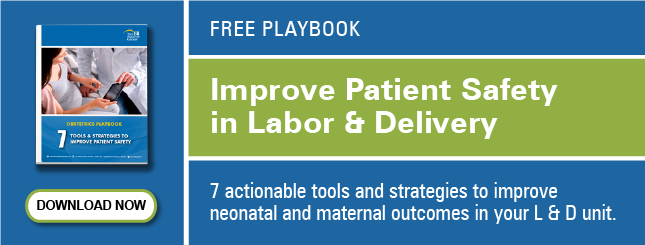 Updated: May 27, 2021
Updated: May 27, 2021
The emergence of the COVID-19 pandemic caused by SARS-CoV-2, a highly transmissible virus that can be spread by asymptomatic people, requires providers to make innovative changes in how patients are seen and treated in the ambulatory setting. Prenatal care requires frequent face-to-face visits, so it is particularly challenged to adapt to protect patients, providers and office staff. Ultrasound testing and fetal monitoring usually also require in-office visits. However, innovations in care such as increased use of telemedicine and self-monitoring at home by patients are being implemented to change the norm for prenatal care. This article will discuss the innovations offices and patients can implement to provide safe, comprehensive prenatal care to pregnant patients with COVID-19.
Case Scenario
A 35-year-old White G2P1, 34 weeks pregnant woman is diagnosed with COVID-19 at her local CVS after being exposed by a family member during a holiday dinner; she has mild URI symptoms at the time of diagnosis. She is considered a low-risk pregnancy. Her prenatal care is routine other than surveillance for AMA and assisted reproduction for conception. Her prenatal provider instructs her not to come to the office for 2 weeks due to the infection, not even for her routine visit and growth ultrasound scheduled for the next day. She is told to take her temperature and call if she has a fever over 38.3°C, shortness of breath or worsening cough. Her physicians prescribe antibiotics and heparin 5,000 units to take daily for VTE prevention. When she returns to the office at 36 3/7 weeks, she has no further COVID-19 symptoms; everyone in the office and the patient wear masks per office protocol. The patient’s BP is elevated and she has proteinuria; the US finds poor growth, EFW at 15% and low AFI. Further evaluation in L&D finds preeclampsia with severe features and a Category 3 tracing. The patient is delivered by CS of a 2,200g infant.
A pregnant patient diagnosed with or suspected to have COVID-19 infection may need to isolate at home and be unable to come to the office for her prenatal visit. However, she will need evaluation and close monitoring more than ever with this infection. If the patient is a low-risk obstetrical patient AND has a low-risk COVID-19 infection, she can be followed using a telemedicine protocol.
Telemedicine for COVID-19 Prenatal Care
Obstetrical providers have been using telemedicine for many years to provide prenatal care in rural and urban settings where patients may have issues with transportation or access to clinic sites. Patients are given devices for self-monitoring and educated in how to measure their weight, blood pressure, fundal height, and fetal heart rate. At-home prenatal care also includes a method of provider communication such as phone call or electronic messaging. Although these telemedicine programs have been created and analyzed for low-risk pregnancies, many of the protocols and methods can be implemented to follow a pregnant patient with COVID-19 infection. *
Materials and devices for at-home prenatal monitoring:
- Thermometer
- BP cuff
- Pulse oximeter
- Fetal heart rate doppler
- Self-administered wireless fetal heart rate monitors (such as Invu, which received FDA clearance in March 2020) can be used for extended periods of recording FHR
- Education on fetal and maternal concerns, including how to monitor fetal movements
The patient should be instructed to call the office with:
- Temp > 38°C
- pO2 < 95%
- Decreased fetal movements
- Maternal warning signs such as chills, dehydration, SOB, confusion, leg redness, and swelling
Protocols for Telemedicine and At-Home Monitoring for Pregnant Patients With COVID-19
Protocols are needed to determine the frequency of telemedicine visits and which signs/symptoms require escalation. Scripted phone call screening or telemedicine (video) visit should include the following screening topics:
- Shortness of breath – unable to walk across the room or have a conversation without catching breath
- Shaking chills
- Cough
- Chest pain or pressure
- Swelling or redness in lower extremities
- Nausea and vomiting: can she keep liquids down?
- Does she seem confused or disoriented?
If the patient has a positive response to these screening questions or her vital signs meet specified criteria, she should go to the hospital for evaluation.
Treatments for COVID-19-related symptoms in pregnancy include:
- Acetaminophen for pain or fever
- Antibiotics (Ceftriaxone) when bacterial co-infection is suspected
Dexamethasone, prophylactic anticoagulation, and antivirals are not currently recommended for outpatient management of COVID-19 infection.
High-Risk Groups
 COVID-19 infections have been linked to more severe outcomes, particularly for women in high-risk groups; poor obstetrical outcomes have included a higher incidence of premature delivery.
COVID-19 infections have been linked to more severe outcomes, particularly for women in high-risk groups; poor obstetrical outcomes have included a higher incidence of premature delivery.
Pregnant patients with COVID-19 infections who are in a high-risk group for severe infections include those with co-morbidities such as obesity, HTN, DM, lung, kidney, liver, or autoimmune conditions. They require a higher level of surveillance with in-office monitoring and evaluation. Obstetrical conditions or increased risk for premature labor may also benefit from in-office evaluation in a safe environment for all.
*The HIPAA Security Rule applies to the use of telemedicine and requires established security for transmission of confidential patient information; this requirement was waived by DHHS after the declaration of a Nationwide Public Health Emergency. Insurance providers, including CMS, may have requirements that include video conferencing between provider and patient that can be safely accomplished on secure platforms such as Doxyme and others.
Related Reading:
- Treatment for Pregnant COVID-19 Patients Not Requiring Hospitalization
- COVID-19 Vaccines During Pregnancy: What Should We Tell our Pregnant Patients About Taking the Vaccine?
References:
- ACOG. ACOG resources. Accessed at: https://www.acog.org/topics/ covid-19.
- ACOG. Outpatient assessment and management for pregnant women with suspected or confirmed novel coronavirus (CVOVID-19). Developed by ACOG and SMFM. July 2020.
- Fryer K, Delgado A, Foti T, Reid C, Marshall J. Implementation of Obstetric telehealth during COVID-19 and beyond. Matern Child Health J. 2020 Jun20: 1-7.
- Mhajna M, Schwartz N, Levit-Rosen L, et al. Wireless, remote solution for home fetal and maternal heart rate monitoring. Am J Obstet Gynecol MFM. May 2020, vol 2(2).
- Society for Maternal-Fetal Medicine Management. Considerations for pregnant patients with COVID-19. Developed with guidance from the SMFM COVID-19 Task Force. Updated 2/2/2021.


